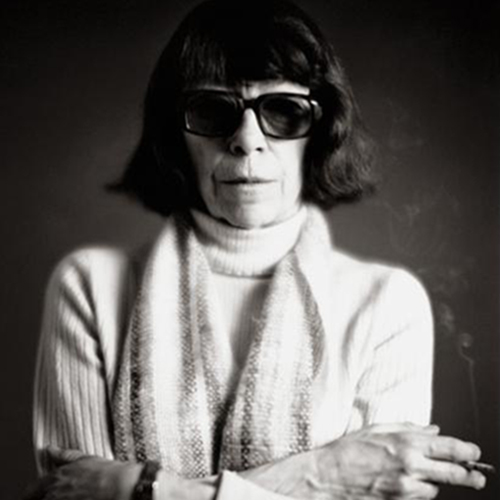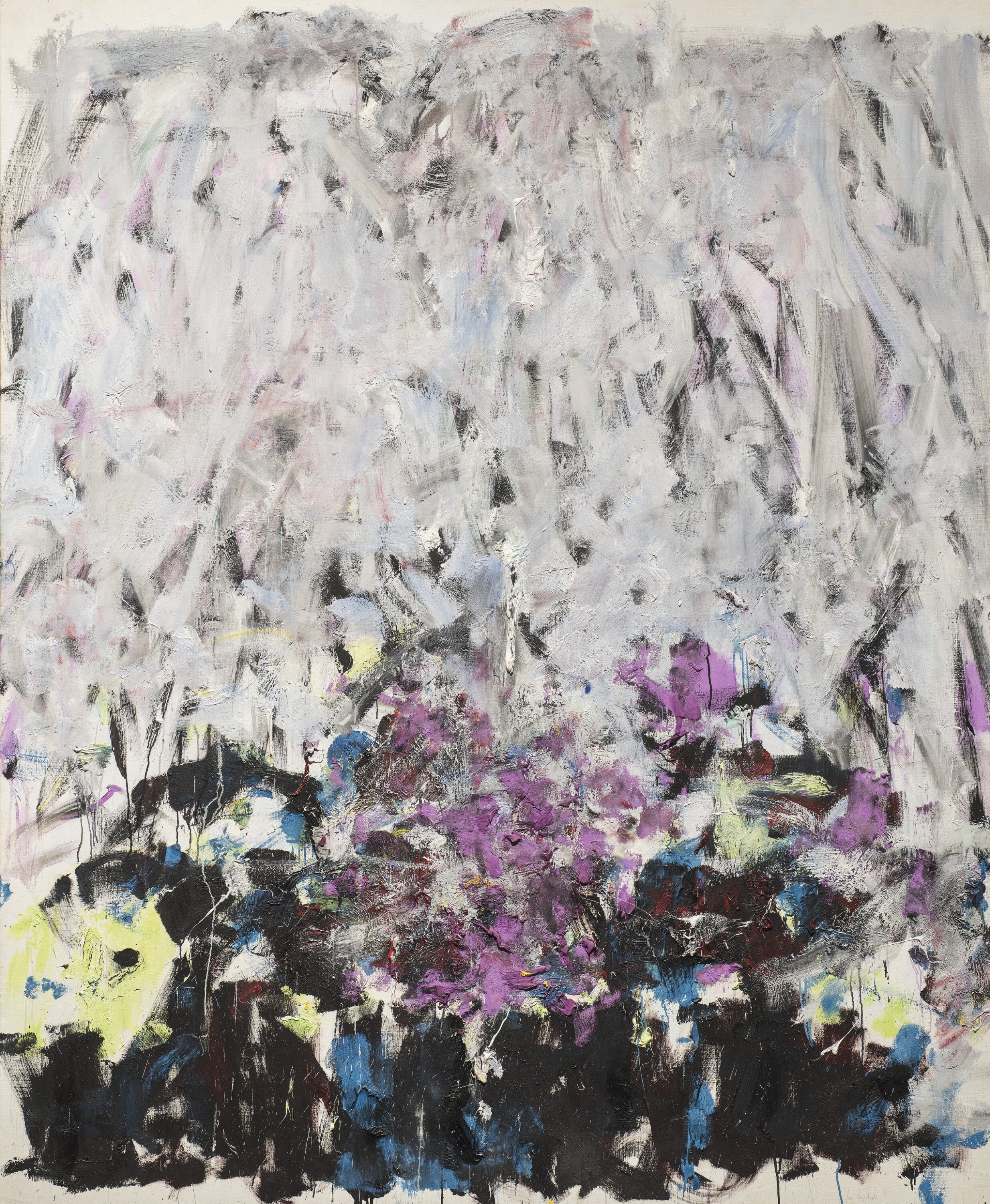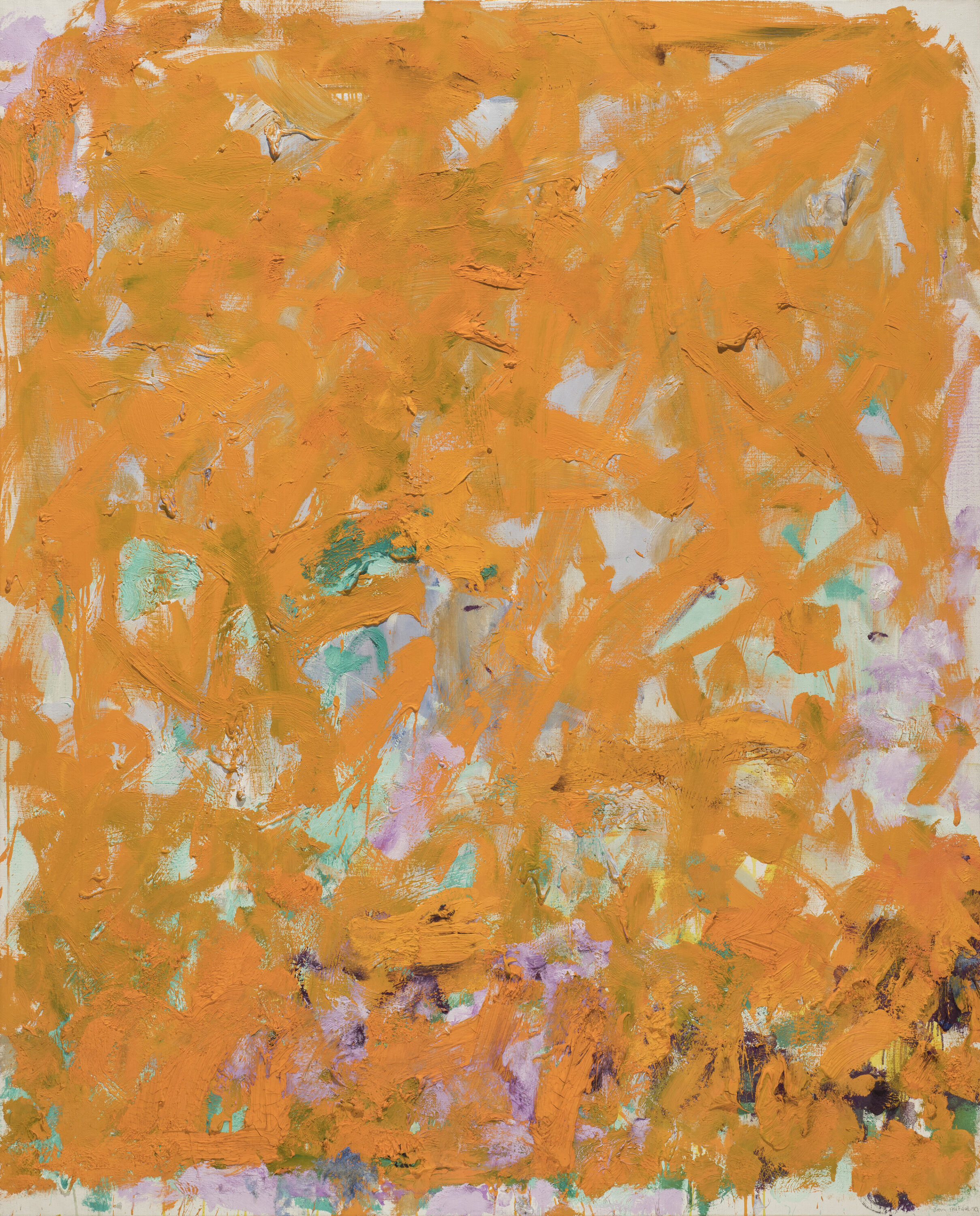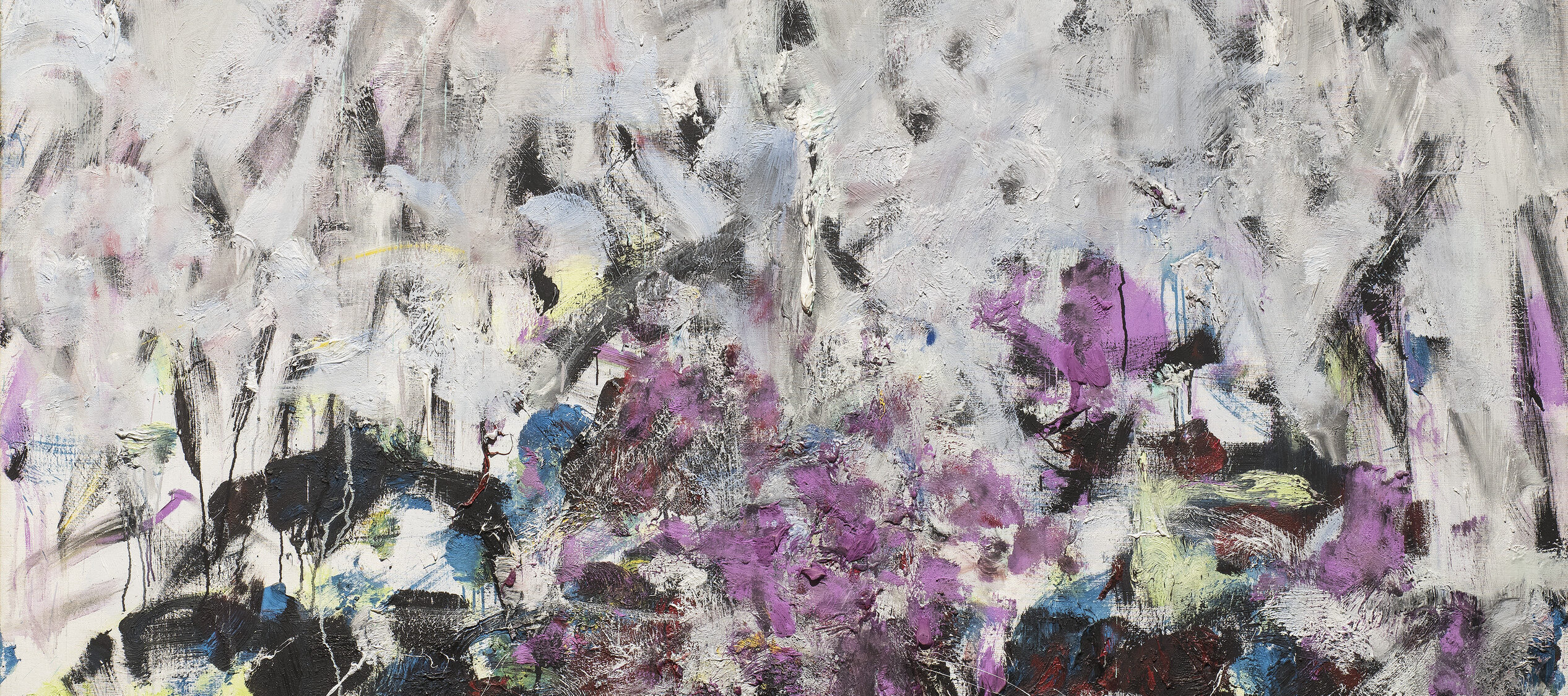While Joan Mitchell (1925–1992) garnered considerable fame as a prominent member of the “second generation” of New York School painters, this designation (which she disdained) leads audiences to overlook the fact that the artist spent the majority of her career in France, at first Paris, and later in Vétheuil, a village near Monet’s house and studio in Giverny. Bilingual after decades abroad, Mitchell elected to anoint herself with an offbeat French idiom, “mauvaise herbe”—signifying a weed—although, in her usage, she reversed its negative meaning, emphasizing a weed’s beauty and ability to flourish in unlikely circumstances. Her purposeful misinterpretation of this phrase neatly conveys Mitchell’s unruly personality and the continual “out of place” feeling she could never overcome.

These presentiments trace back to Mitchell’s wealthy Chicago childhood. She was the second daughter of Marion Strobel, a poet whose promising career was stymied by her authoritarian and patriarchal husband, who expressed keen disappointment that Joan was not a son. Her resultant dis-ease continued into adulthood, leading her to live and work in Europe and, after 1959, to limit her extended forays back to New York and its misogynistic art world milieu. Her transatlantic artistic identity did turn fraught—for France, Mitchell wryly explained, her art was too American (i.e., violent) and, for Americans, too French, her paintings downgraded as decorative.
Mitchell’s fierce sensuality and predilection for risk became subsumed into passionate compositions beginning in Paris, followed by the exquisitely poetic, oversized canvases she produced after moving into a more peaceful life in Normandy. In Vétheuil, Monet, Cézanne, Van Gogh, and Matisse seemed like “colleagues” to her, and Mitchell developed a deeply considered visual dialogue with their unmistakably French approaches to space and color.
The National Museum of Women in the Arts is fortunate to own two exemplary oil paintings—Sale Neige (1980) and Orange (1981)—demonstrating a transition toward the renewal of Mitchell’s later work. Sale Neige, whose title seems to—but doesn’t really—refer to dirty snow, exemplifies the strikingly atmospheric landscape-based abstractions, evocative of nature’s ever-changing temperaments, that Mitchell developed by the eighties. In the prominent upper area of this edge-to-edge, hardly “dirty” composition, downward strokes of white, tinted with pinks, lavenders, and lighter blue, partially reveal a scaffolding of black lying underneath. Below, more thickly applied, colorfully accentuated horizontal and vertical scrawls are punctuated by gravitational drips, suggesting a receding natural topography through complementary touches of lilac, cobalt blue, and dazzling yellow.

In conceptualizing Sale Neige, Mitchell recalled the silent and colorless winters of her Lake Michigan childhood: the white is “in me,” she always maintained. Orange exemplifies the artist in a different frame of mind. Painting with a bolder brush, here her manipulation of vigorous strokes into a grid-like over-covering replaces, more brashly, land and sky references traditional in landscape painting. “People always look for the horizon. I want to hold a surface in space,” Mitchell explained of her nature-based abstractions. This superimposition appears heavier, denser, and more textured at the top, a reverse compositional ploy Mitchell developed to represent emotional intensity in a structural way. Pentimenti below in glowing pastel hues, especially the pale greens and lavender of her Vétheuil garden, subtly hint at deeper space.

White pigment patches scattered throughout Orange interject air, acting as rest stops for the viewer’s eye. These sections serve to modify the overwhelming edge-to-edge markings in dissonant orange, a hue that Mitchell used frequently, its emotive permanence in her consciousness traceable back to childhood. The artist—the centenary of whose birth is being celebrated in 2025—insisted, “I paint from remembered landscapes that I carry with me and remembered feelings of them which of course become trans-formed.” Further differentiating herself from the New York School, she chose to modify improvisation with clarity. “I want to know what my brush is doing,” she said. Her work also served a deeper purpose: “Painting” she confirmed, “is what allows me to survive.”
